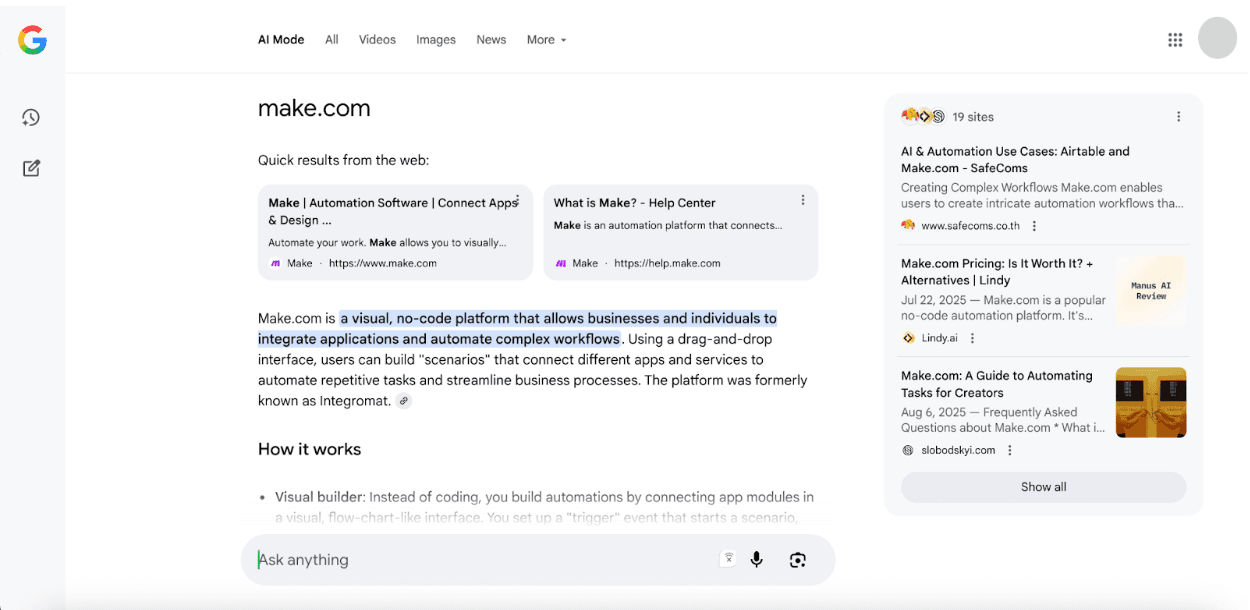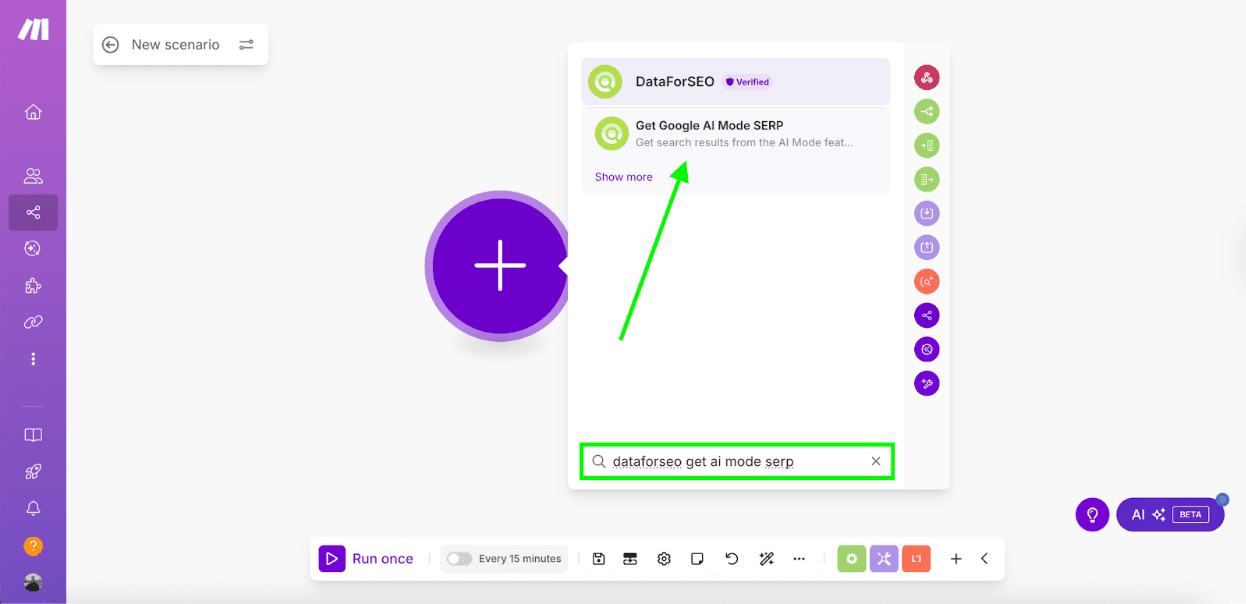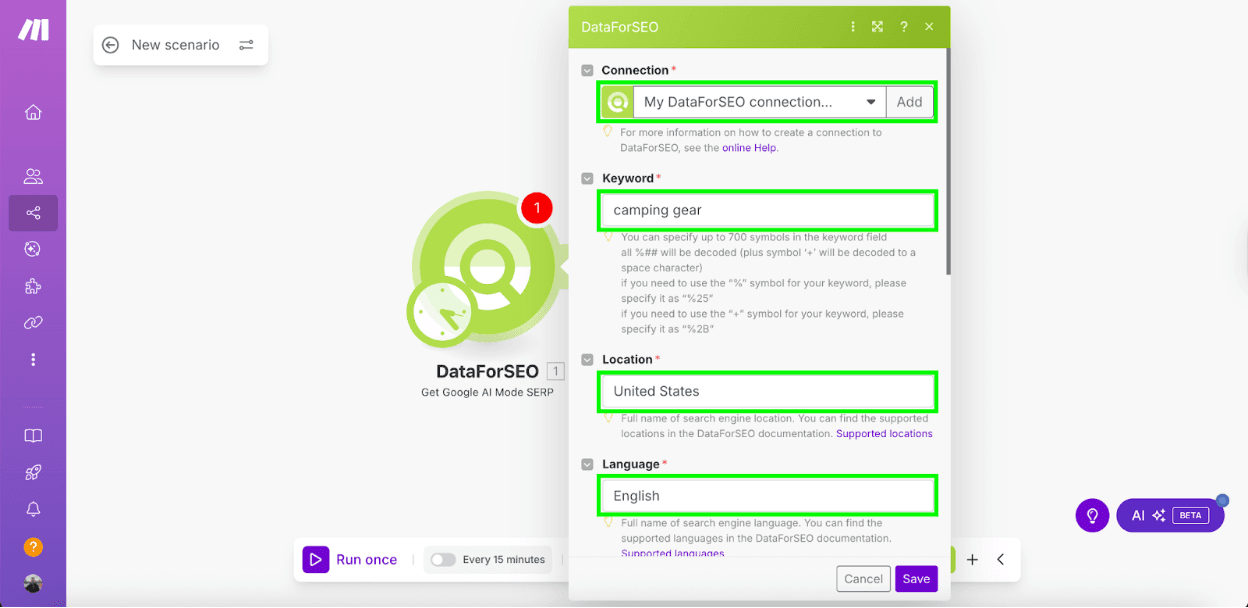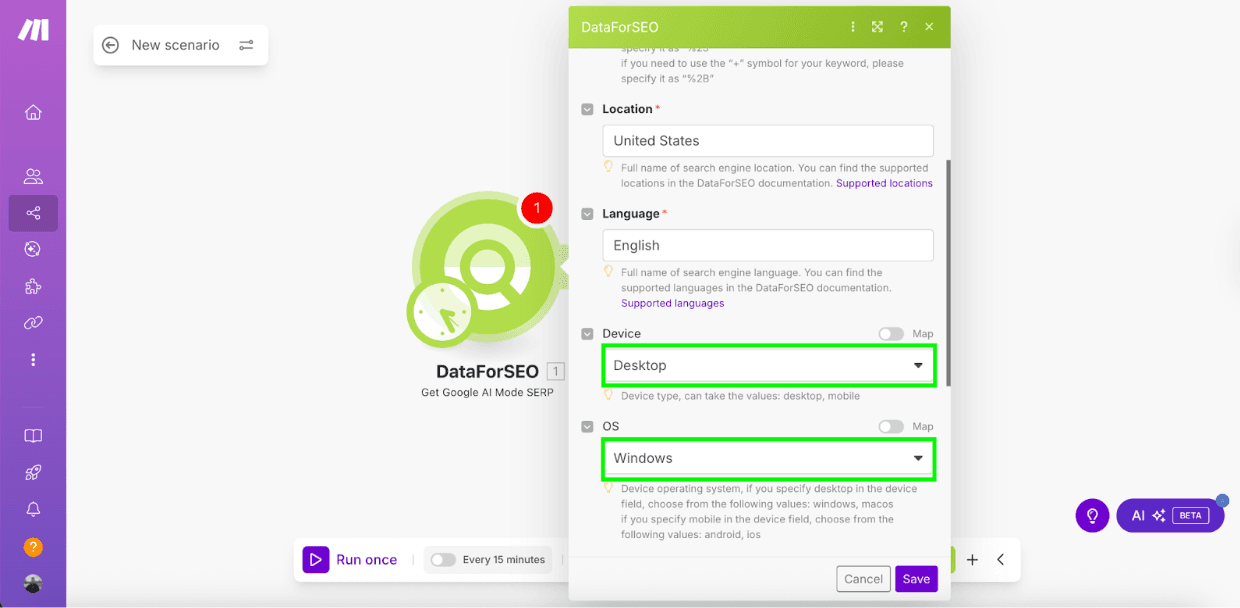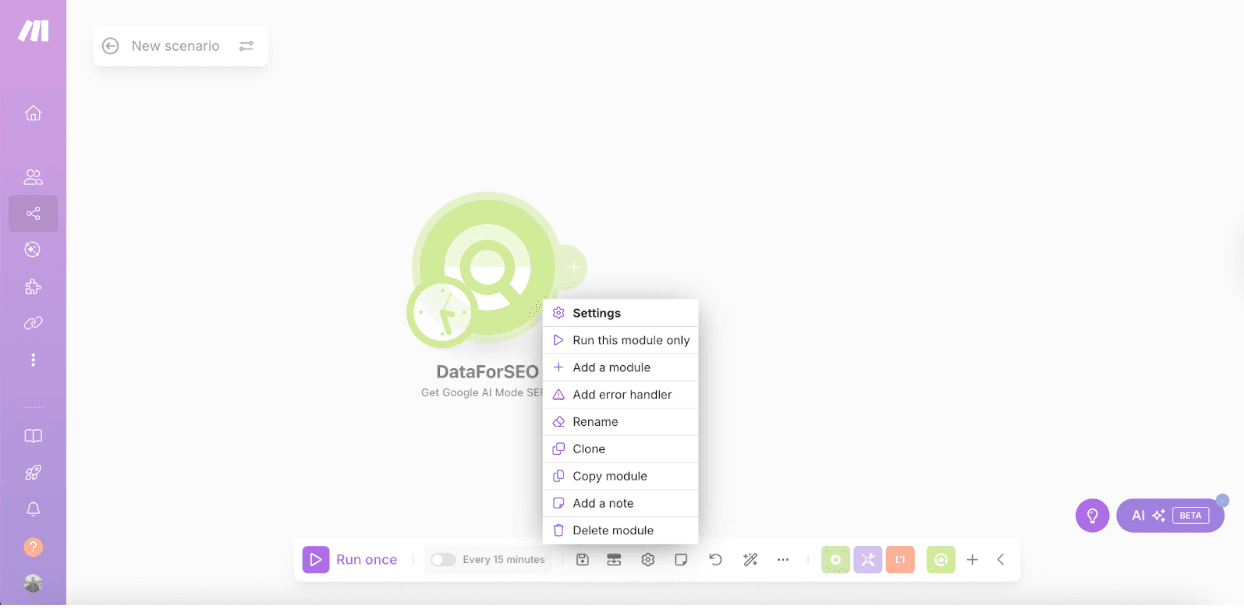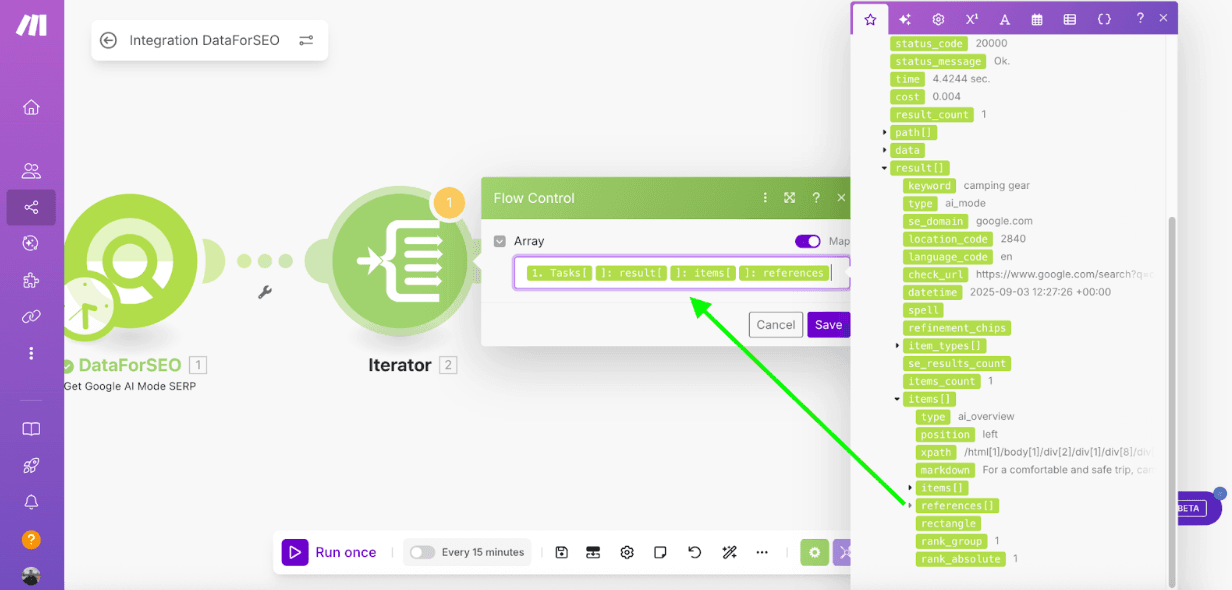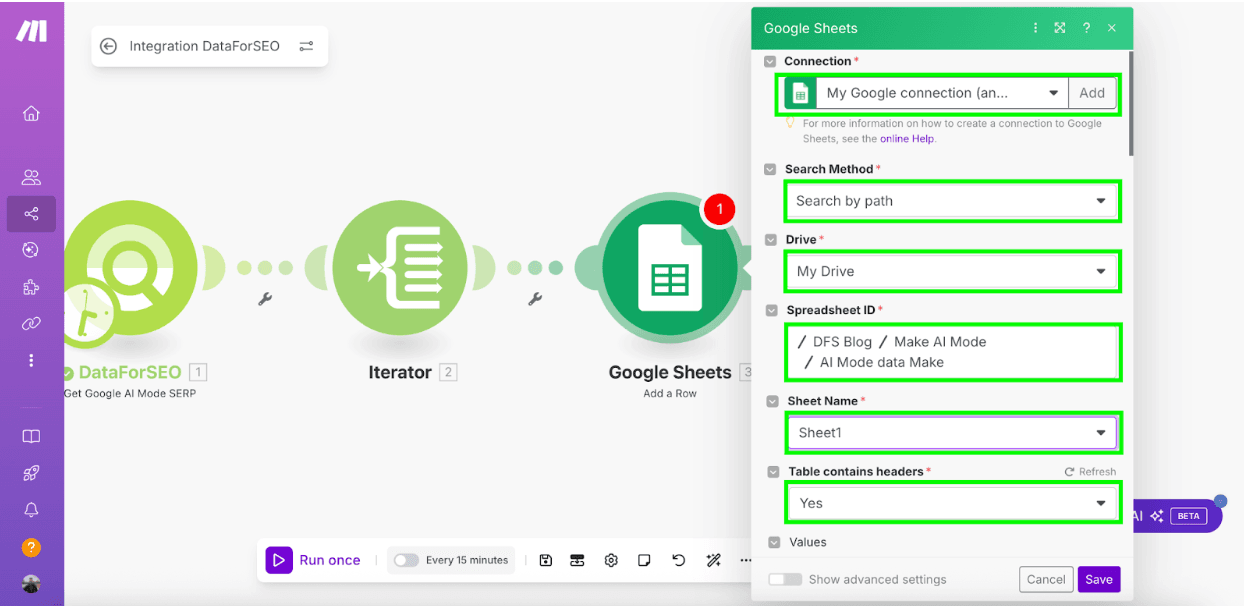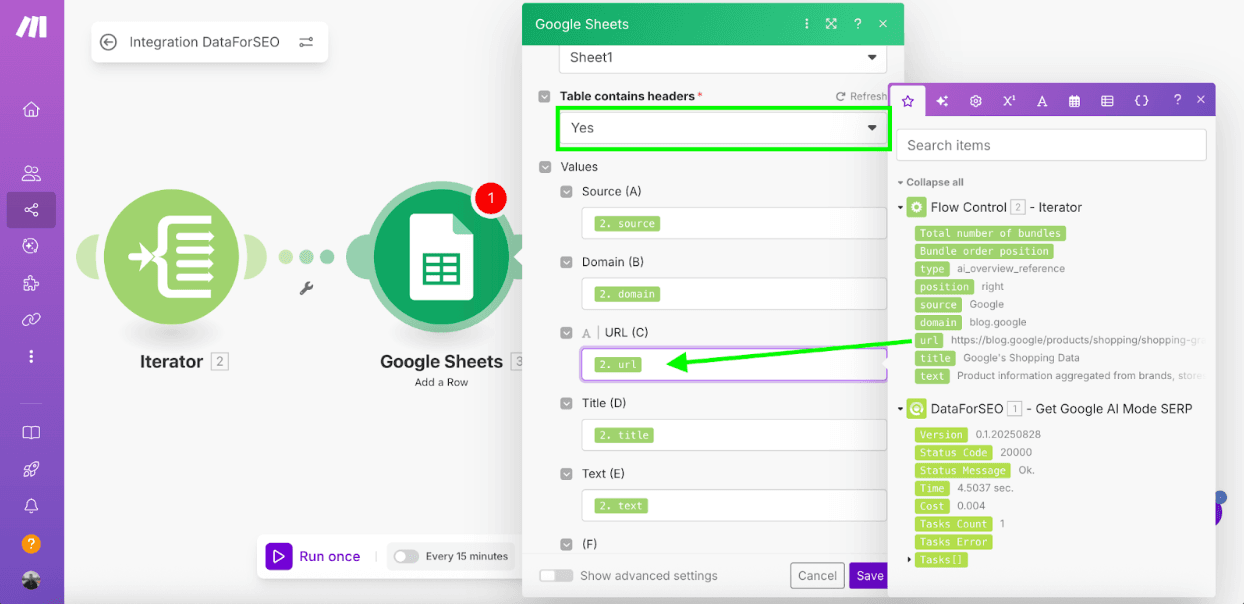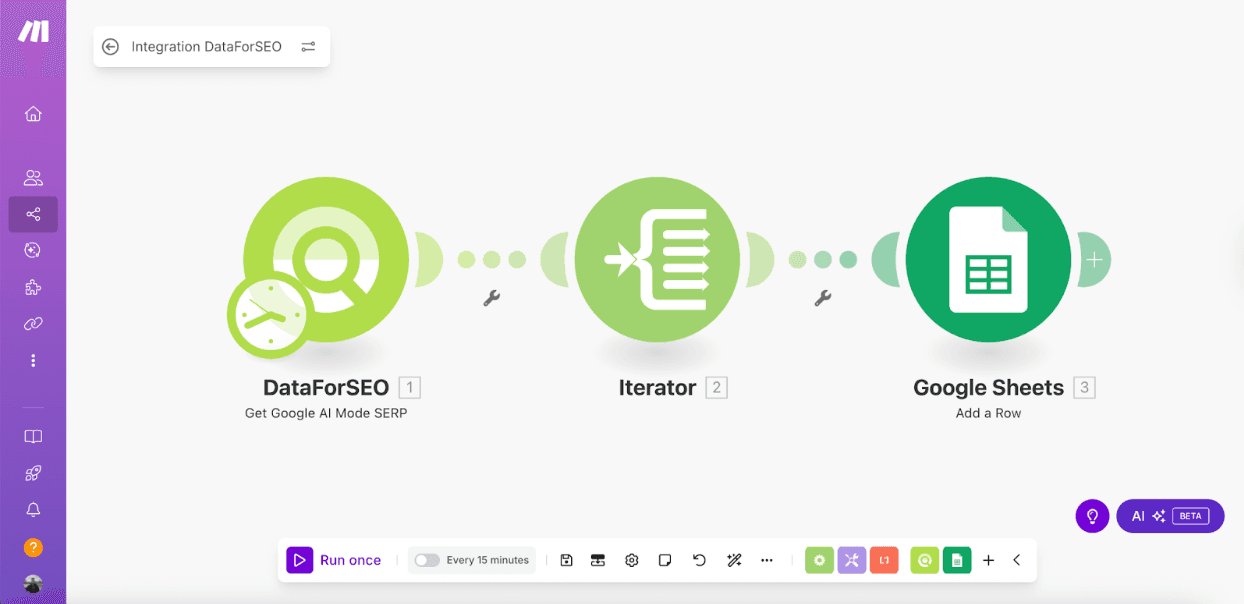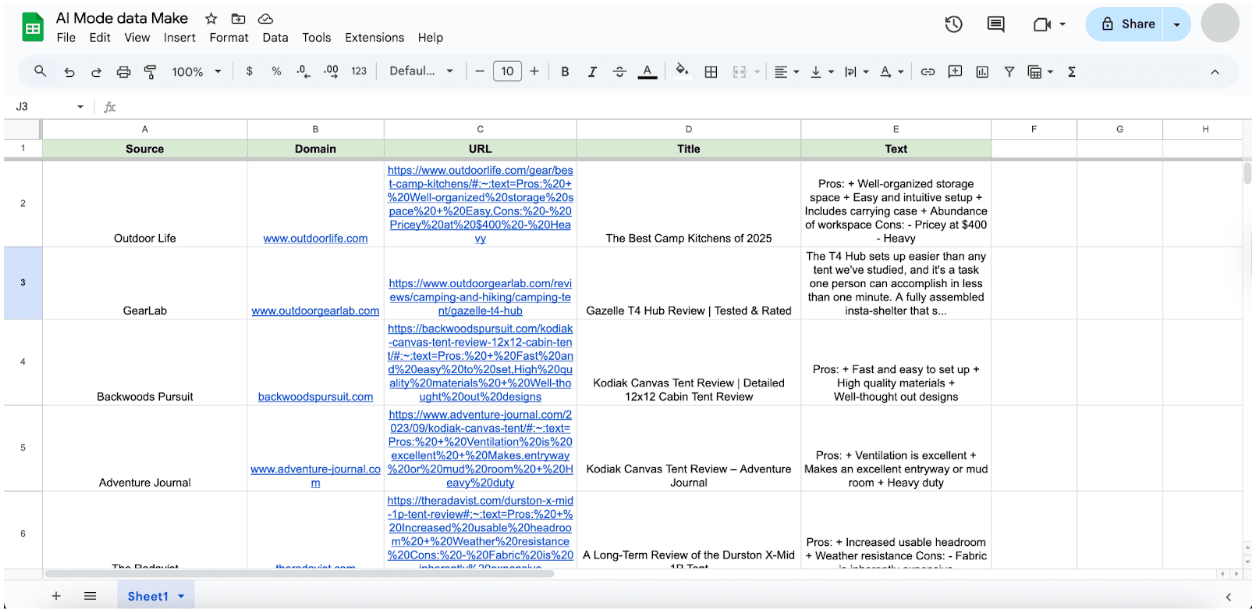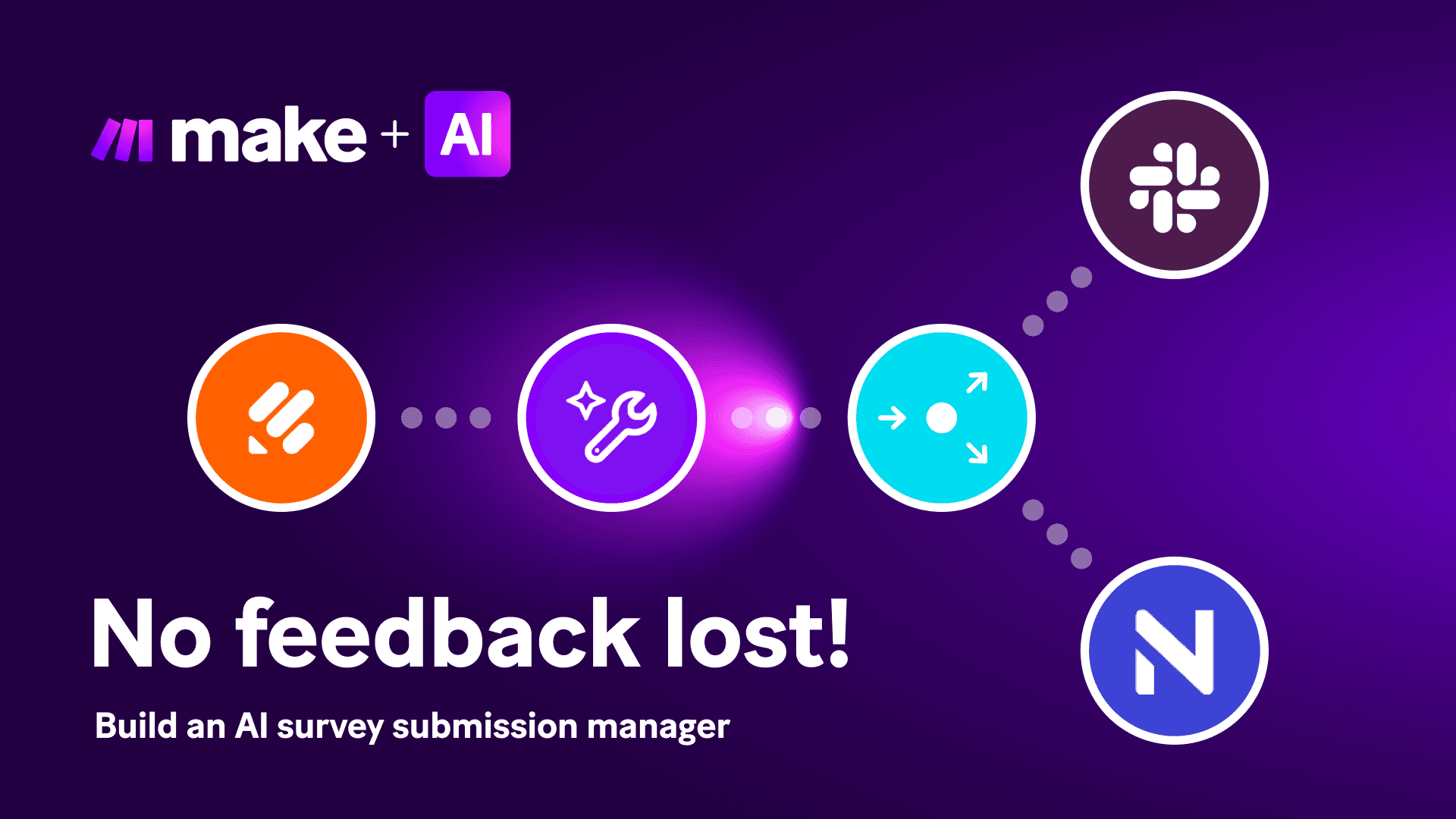Oct 22, 2025 | 7 minutes
How to track Google AI Mode references automatically using Make and DataForSEO
Ready to master AI-driven search? Learn how to automatically track Google AI Mode references, monitor citation frequency across keywords, analyze competitor performance, and optimize your content for conversational search results.
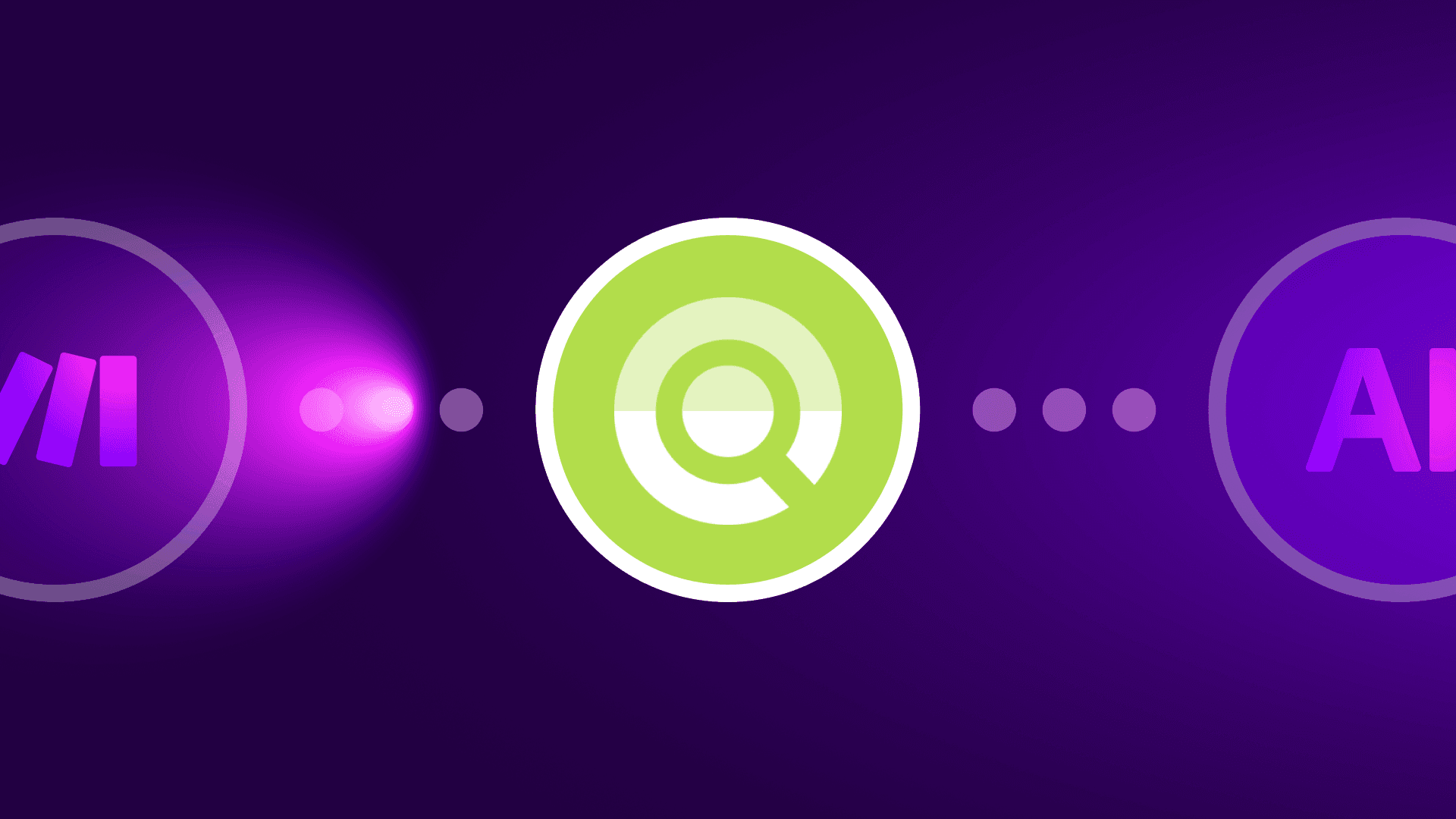
Imagine walking into a library and instead of being handed a stack of books to search through, the librarian reads through everything and tells you exactly what you need to know, mentioning specific books as sources along the way. This is essentially what Google AI Mode does, giving conversational, source-backed answers to users rather than lists of ranked links. The challenge is to know when and how your “book” gets referenced in countless AI Mode conversations.
Unlike standard SERPs, which are relatively stable, AI Mode references are embedded in dynamic responses and change depending on context and conversation flow. The fluid nature of AI Mode responses makes manual tracking impossible, since you need to analyze thousands of results and document every mention.
In this article, we’ll explore how to track Google AI Mode references automatically with Make and DataForSEO API. We’ll also cover how AI Mode shapes the future of SEO and ways to leverage reference data to win competition in the AI-powered search.
Explaining Google AI Mode
Google AI Mode is a huge step forward in Google’s shift to AI-driven search. It’s a standalone AI search engine that delivers comprehensive answers to user queries and is powered by state-of-the-art Gemini 2.5 LLM. Google AI Mode doesn’t just summarize the information across the web; it applies reasoning, context, and follows the user’s intent to generate a curated response.
Inside, AI Mode is nothing like traditional SERP. You won’t find a list of results’ snippets or many standard SERP features. Instead, you have only a simple chat window at the bottom, like in the popular AI chatbots. But the real magic happens when you send a message to AI Mode.
The system instantly generates an answer, structured into concise paragraphs and lists with relevant information. You can send follow-up messages to AI Mode and explore the topic further in a conversation-like format. But the most important part for SEOs is that every response comes with source references, leading to websites that Google finds the most valuable.
With such distinct features, AI Mode definitely revolutionizes web search. At the same time, its new visibility mechanics and reference system have completely changed the SEO game. Here is how.
How AI Mode shapes the future of SEO
The Google AI Mode struck the SEO industry with four major changes:
No traditional ranking. Instead of ranking pages only against performance and relevance to the initial query, Google considers topic coverage, content structure, and conversation context in this search type. Then, it embeds the most relevant content pieces into the response, featuring a link to the source website.
New approach to visibility tracking. For AI Mode, where websites appear as references, traditional SERP position tracking becomes irrelevant. Instead, you must track citation frequency and prominence within AI-generated results.
New rules of competitor research. Just tracking your visibility isn’t enough to win over competition in AI Mode. You should carefully monitor your competitors, especially how AI summarizes and cites their content, which pages are quoted, and much more.
Access to structured AI Mode data. All optimization efforts for AI Mode depend on access to structured data from its responses. However, when citations are embedded in paragraphs, known data scraping methods become obsolete.
From all of these changes, the need to access structured data to track references emerges as the most pressing challenge. This is where automation becomes not just helpful but essential. With the power of Make and the DataForSEO API, you can seamlessly track references from AI Mode responses at scale and without writing a single line of code.
Let’s dive into this powerful solution.
Step-by-step guide: how to use Make and DataForSEO to automatically track citations
In the guide below, we will show you how to use Make and the DataForSEO API to track references from AI Mode. This setup automatically pulls citation data, such as source URLs, domains, and text snippets included in the AI Mode responses. The data is then neatly organized in Google Sheets in a format ready for analysis.
Before building this automation, make sure that you have:
A DataForSEO account and your API credentials.
A Google Sheet with columns: Source, Domain, URL, Title, Text.
After that, proceed with the following steps:
1. Log in to Make and go to Scenarios. Click Create a New Scenario.
2. Click the heavy Plus bubble to add a new module. Search for DataForSEO – Get Google AI Mode SERP and add it to the workflow.
3. The DataForSEO - Get Google AI Mode SERP module fetches AI Mode responses with all reference URLs, domains, titles, and text snippets. To enable this module, you should configure the connection and key request parameters.
Establish a connection using your DataForSEO API credentials. Then, specify the target keyword or keyphrase (e.g., “camping gear”). After that, set the location and language parameters in the respective fields.
4. Additionally, to get results specific to device and operating system type, specify the respective parameters in the module.
Click Save to confirm the configuration.
5. Right-click the DataForSEO module, then click on Run this module only to ensure your configuration works correctly.
6. Add the Iterator as the next module. The Iterator transforms the references array into separate batches, allowing you to process data for each referenced website individually. Open the Iterator, and in the Array field, drag and drop the references array from the DataForSEO module’s response.
7. Add and configure Google Sheets - Add a Row module. This module will structure and save the reference data into the respective columns of your Google Sheet.
Create a connection with your Google Drive. In the Search Method, select Search by Path, then select your Drive and the path to your spreadsheet. Then, set Table contains headers to Yes to show the column names that appear under Values.
8. In the Values section, map the API response fields from Flow Control to respective columns.
Click Save to confirm the configuration.
9. That’s it! Your AI Mode references tracker is now ready to use. Click the Run once button to pull the reference data into your Google Sheet.
As you can see, the automation fetched references that appear for the “camping gear” query in AI Mode’s response. With each run of the automation, you will receive reference URLs, domains, source names, and titles, as well as text snippets used by AI Mode. You can schedule the automation to run daily, weekly, or at any interval that suits your monitoring needs.
Practical ways to use AI Mode reference data
Now that you have an effective way to track AI Mode references, let’s see how you can use this data in practice and excel in AI Mode optimization:
Track citation frequency across keywords. Each AI Mode reference includes the domain, title, and URL of the website. It allows you to log every time your website is referenced in an AI Mode response for specific keywords. By collecting this data across multiple keywords, you can monitor how often your website appears as a cited source and which queries trigger your citations. Besides, you can investigate which specific URLs or pages are being referenced. Analyzing the citation frequency helps to identify when your domain drops out of citation lists and visualize trends in your overall AI Mode visibility.
Make your content crawlable by AI Mode. The text snippets that come with the AI Mode references have the exact phrasing Google’s AI uses in its responses. These snippets reflect how Google wants to present information to users. You can gain insights from these snippets to refine your content. For instance, you can identify patterns Google used in generating content and preferred text attributes and make adjustments to your product copies and service descriptions. Similarly, you can add more relevant information to your content to cover the target topic completely. This will increase your chances of appearing in AI Mode responses.
Monitor and assess competitors’ performance. With this automation, you can also spot and track your AI Mode competitors that appear in the references. Then, you can examine the content structure and depth of coverage of competitor pages to identify why AI mode considers them relevant. This will help you understand the strong and weak points of your content and create strategies to outperform your rivals.
With actual AI Mode reference data in hand, you're now equipped to optimize for AI-driven search. This automation serves as your foundation for AI Mode success, from tracking visibility in conversational responses to analyzing your competitors.
Wrap-up
The Google AI Mode dramatically changes SEO rules, replacing traditional rankings with references in generated responses. But the powerful Make and DataForSEO combination will help you face this change head-on. With the automated reference tracker, you can closely watch AI Mode, track your and your competitors' performance, and adapt content to shifting Google AI algorithms.

